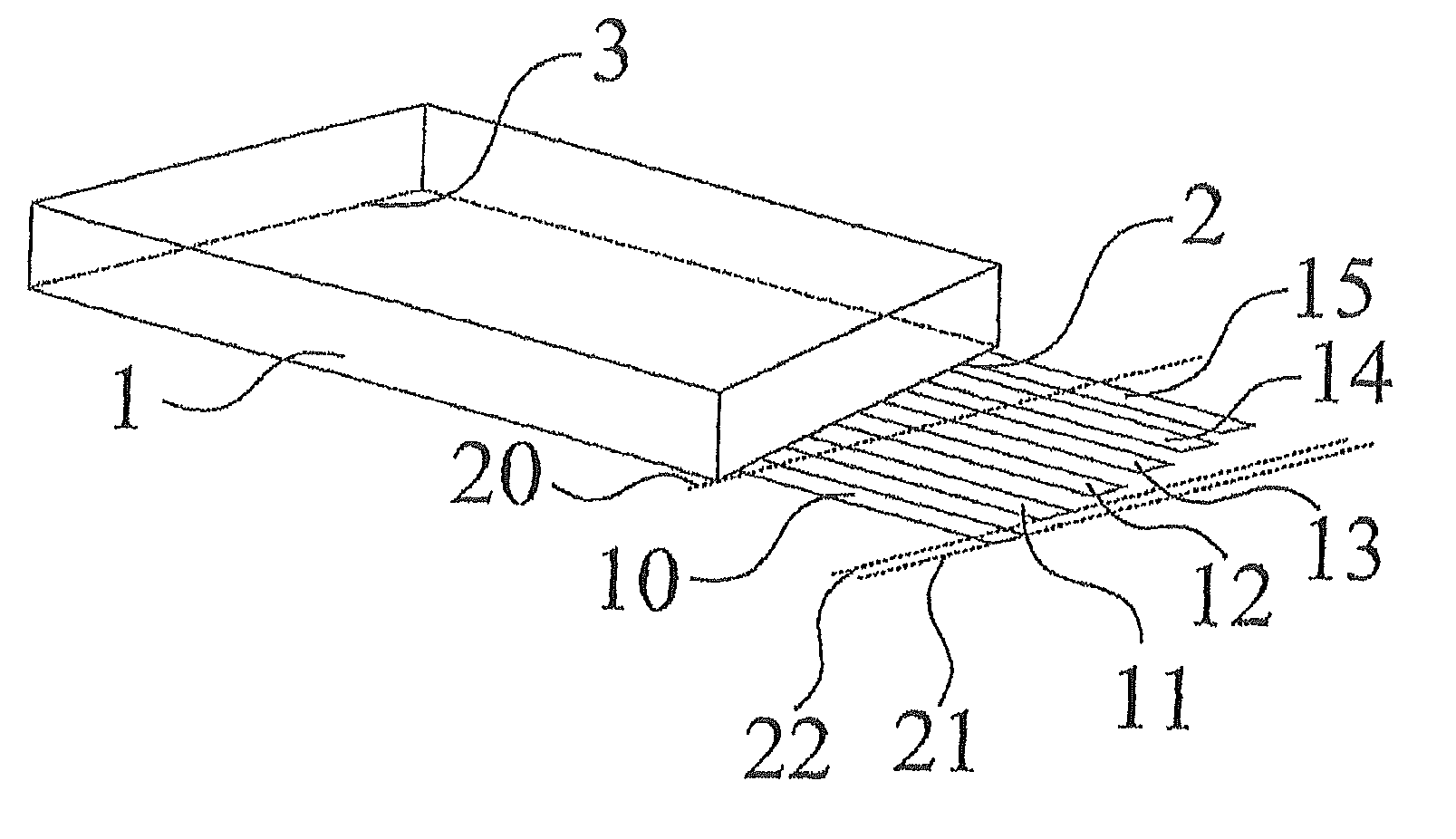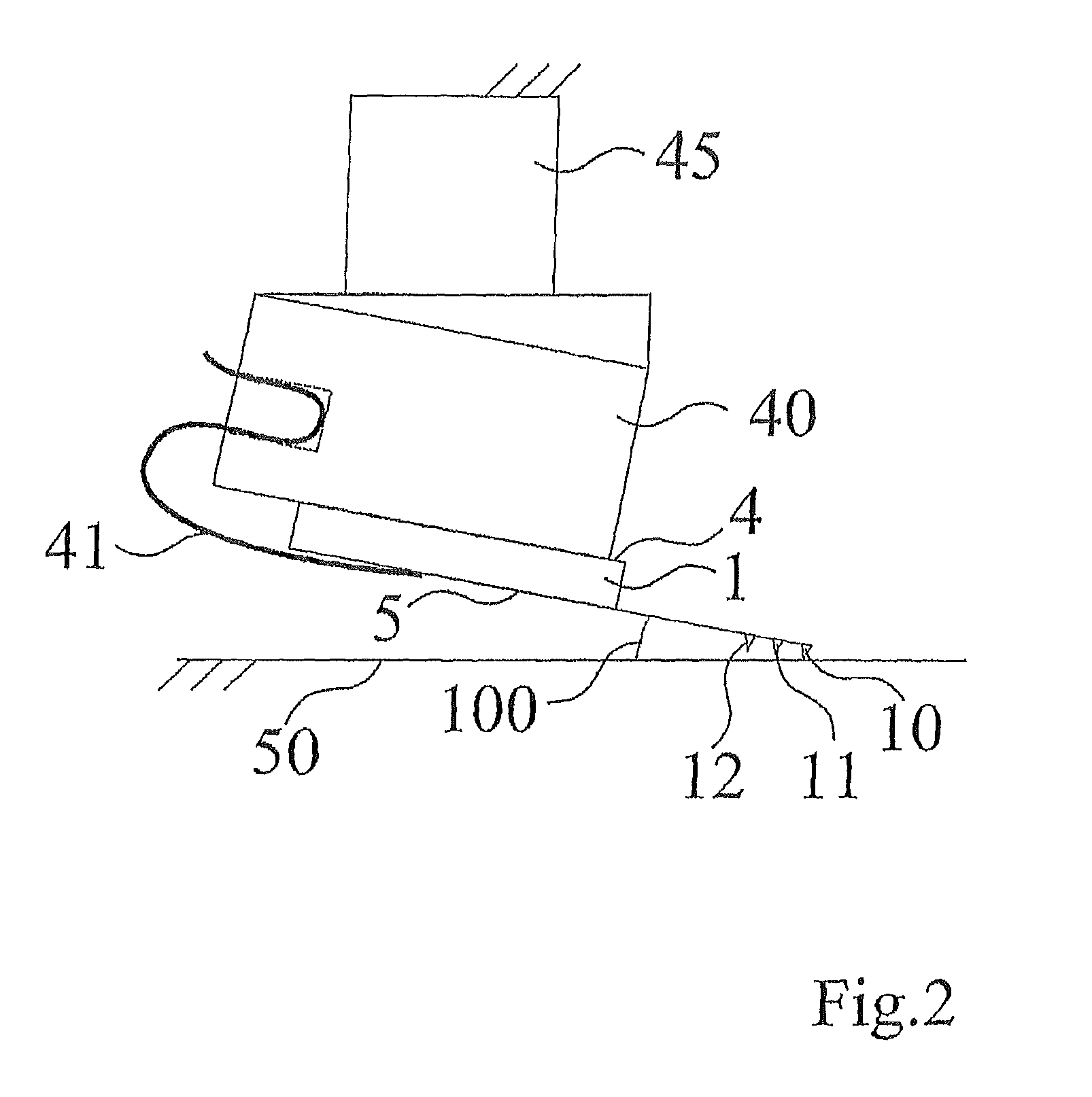Method for examining a test sample using a scanning probe microscope, measurement system and a measuring probe system
a scanning probe and microscope technology, applied in the direction of measuring devices, nanotechnology, instruments, etc., can solve the problems of cell death, no physiological conditions, and ageing that cannot only occur, and achieve the effect of reducing time expenditur
- Summary
- Abstract
- Description
- Claims
- Application Information
AI Technical Summary
Benefits of technology
Problems solved by technology
Method used
Image
Examples
Embodiment Construction
[0042]In the following, the invention is explained in more detail using exemplary embodiments with reference to figures of a drawing. They show:
[0043]FIG. 1 an arrangement with a measuring probe receptacle, several measuring probes being jointly formed thereon;
[0044]FIG. 2 an arrangement with a measuring probe receptacle, several measuring probes being jointly arranged thereon, and a measuring probe displacement means to which the common measuring probe receptacle is coupled;
[0045]FIG. 3 several depictions to illustrate the displacement of measuring probes being jointly formed on the measuring probe receptacle between measurement position and non-measurement position;
[0046]FIG. 4 a flowchart; and
[0047]FIG. 5 another arrangement with a measuring probe receptacle and several measuring probes formed thereon.
[0048]FIG. 1 shows an arrangement with a measuring probe receptacle 1, also being shortened referred to as a base, several measuring probes or probes 10, . . . , 15 being arranged t...
PUM
 Login to View More
Login to View More Abstract
Description
Claims
Application Information
 Login to View More
Login to View More - R&D
- Intellectual Property
- Life Sciences
- Materials
- Tech Scout
- Unparalleled Data Quality
- Higher Quality Content
- 60% Fewer Hallucinations
Browse by: Latest US Patents, China's latest patents, Technical Efficacy Thesaurus, Application Domain, Technology Topic, Popular Technical Reports.
© 2025 PatSnap. All rights reserved.Legal|Privacy policy|Modern Slavery Act Transparency Statement|Sitemap|About US| Contact US: help@patsnap.com



